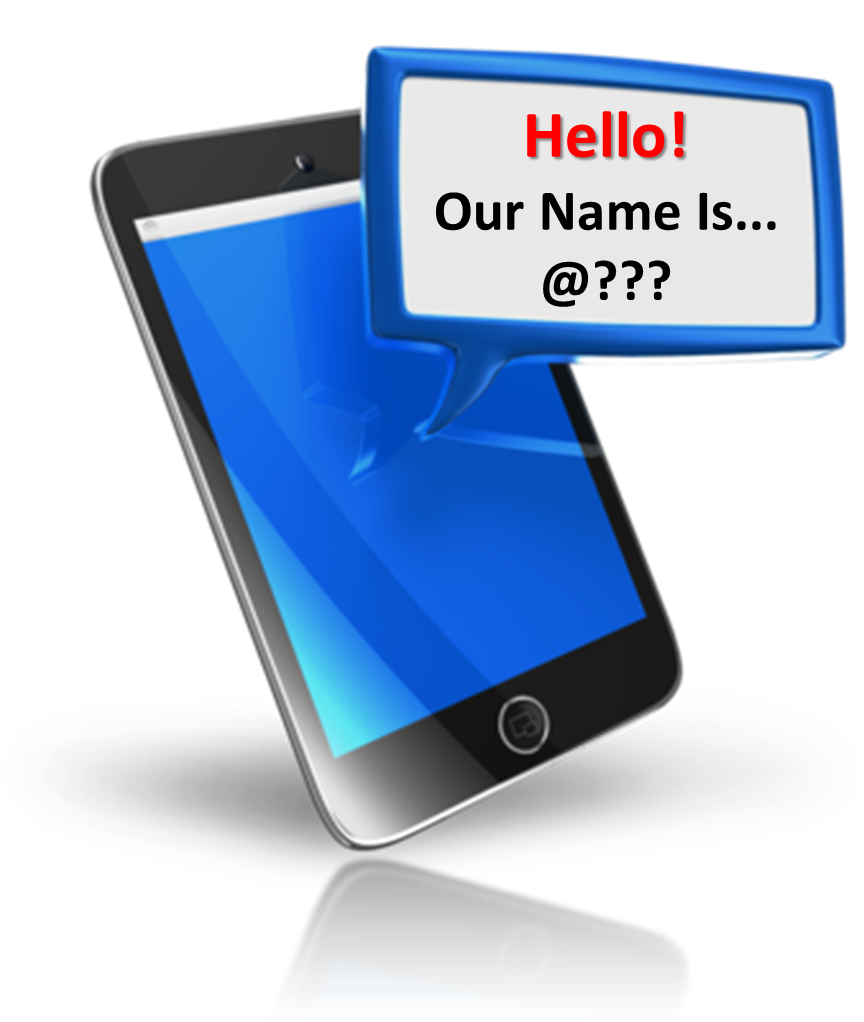[vc_row][vc_column width=”1/1″][vc_row_inner][vc_column_inner width=”1/4″ css=”.vc_custom_1424116628831{padding-top: 10px !important;}”][vc_column_text] [/vc_column_text][/vc_column_inner][vc_column_inner width=”3/4″ css=”.vc_custom_1424116622032{padding-top: 10px !important;}”][vc_column_text]In the Digital Era, creating a brand identity for a new enterprise or rebranding an existing organization poses a unique set of challenges. This article suggests 13 key factors that should be considered to maximize the likelihood of success. The factors are derived from the successful and failed (re)branding efforts of others, our own brand management experiences, and lessons learned from a rebranding initiative in early 2013.[/vc_column_text][/vc_column_inner][/vc_row_inner][divider_line type=”divider_line”][vc_column_text]Creating a new brand identity and/or rebranding an existing organization has never been easy, but doing so in the Digital Era creates a unique set of challenges that many people are either unaware of or tend to underestimate.
[/vc_column_text][/vc_column_inner][vc_column_inner width=”3/4″ css=”.vc_custom_1424116622032{padding-top: 10px !important;}”][vc_column_text]In the Digital Era, creating a brand identity for a new enterprise or rebranding an existing organization poses a unique set of challenges. This article suggests 13 key factors that should be considered to maximize the likelihood of success. The factors are derived from the successful and failed (re)branding efforts of others, our own brand management experiences, and lessons learned from a rebranding initiative in early 2013.[/vc_column_text][/vc_column_inner][/vc_row_inner][divider_line type=”divider_line”][vc_column_text]Creating a new brand identity and/or rebranding an existing organization has never been easy, but doing so in the Digital Era creates a unique set of challenges that many people are either unaware of or tend to underestimate.
As much as people complain about – and perhaps even hate – all the crazy, made-up names that abound in cyberspace (e.g., HootSuite, TweetDeck, FourSquare, HubSpot, Yammer), the simple reality is that the digital environment basically forces organizations to create new terms to represent their brand identities. Although simple, generic and/or long descriptive names can work in the physical world, they don’t work in cyberspace for two primary reasons:
- Once someone grabs a url and/or other digital identities, it’s not available for anyone else to use.
- Digital brand identities have to be short. Yes, it’s possible to create acronyms from longer names, but they are often meaningless and unmemorable when taken out of context.
For example, when we rebranded earlier this year, one of the suggested alternatives to our proposed ideas was Advancing Organizations through Social Media. For our website then, we would have had to acquire a url like advancingorganizationsthroughsocialmedia.com or some oddly chunked-up version of it, or aosm.com, none of which were particularly appealing. In addition, although it wasn’t active, aosm.com had already been taken – as had most of the other brand identity suggestions people offered, like SocialEnterprise, Digital Plus, Envision, and SmartMedia.
In addition to the need for a unique name that could be expressed in relatively simple but meaningful terms, there are 11 other factors we believe should be considered when establishing a new brand identity. We developed these factors during our own rebranding initiative, based on our experiences with our former brands, lessons learned from the (re)branding efforts of others, internal discussions, fairly exhaustive research, and the feedback we received regarding the four new brand identities we had created (more on that in a future piece).
The factors we propose are primarily relevant for organizations, but they can also be used by individuals who want to create valuable brand identities for themselves on multiple digital platforms. If you have recommendations for other factors to consider when (re)creating a brand identity in the Digital Era, as well as other examples that illustrate the various factors, we’d love to hear them.[/vc_column_text][/vc_column][/vc_row][vc_row][vc_column width=”1/1″][vc_column_text]
A Digital Era Brand Identity Should…
[/vc_column_text][vc_column_text]
1. Reflect the essence(s) of what an organization and its product/services are all about rather than being a literal description
Like us, rFactr rebranded (from The Targeted Group) earlier this year. Here’s how they describe the creation of their new brand identity:
In March of 2013, we launched a rebranding of the company to reflect our focus as a social business company and align our company description more accurately with our ability to produce measureable return, revenue and results. This is what the “r” in rFactr stands for. This marked the birth of rFactr as a brand and opened an exciting new chapter in our company’s history.
2. Maintain relevance over time, even as the entity and its focus change
This was the main problem with our old Social Media in Organizations (SMinOrgs) brand. Even though the group had evolved to address Digital Era opportunities and challenges more broadly, our identity didn’t reflect that. And unlike brand identities like Mashable or TechCrunch, it was too specific to be repurposed for a wider range of applications.
Similarly, TweetDeck was originally conceived as a way of managing Twitter activity exclusively. Over time, as it expanded to include other social networking accounts like Facebook, its brand identity became a less accurate reflection of its focus. In contrast, its main rival, HootSuite, had a name that was sufficiently flexible to stay viable even as the service evolved. (Note: Now that it is owned by Twitter, TweetDeck has reverted to a Twitter-only management tool, so its name is accurate again.)
3. Be unique but not confusing
Two of our proposed brand identities, Soditeco (an acronym that stands for Social and Digital Technology in Organizations) and Soditelo (an acronym that stands for Social and Digital Technology Leadership in Organizations), failed this test pretty quickly. When we solicited feedback via a publicly-available survey, we got comments like the following:
- – Sod makes me think of grass, not anything social.
- – First part of the word sounds like sodemy.
- – It seems like a research company for the soft drink industry.
- – In UK English this could be interpreted rudely.
- – I(t) sounds too much like “Sodexo,” a provider of integrated food and facilities management services.
4. Have an easily explainable meaning (but that meaning doesn’t need to be immediately obvious)
When people ask what the name means, it should be possible to give an “elevator speech” answer that is relatable and understandable. The brand identity for the social recognition company YouEarnedIt, for example, can be explained in fewer than 25 words: Through an intuitive and flexible software platform, YouEarnedIt offers a meaningful approach to employee recognition and a better rewards experience for everyone.
5. Invoke positive emotions (or at least not invoke negative ones)
Not everyone is going to instantly love any new brand identity, especially when it’s created using an odd-sounding, made-up term, but you want to make sure that the majority of people like or at least accept it. Our rebranding survey results revealed pretty clearly how unappealing the proposed Soditeco and Soditelo brand identities were, not just cognitively but also emotionally (they were hated or disliked by 79% and 70% of respondents, respectively). By contrast, the other two options – Denovani and Denovati – engendered mostly neutral or positive responses (57% and 61% respectively were neutral or positive; and 76% rated Denovati as their first or second choice).
6. Not be used in another context with a meaning that doesn’t reflect the organization and/or its objectives
The best example of this point is Qwikster, the name Netflix wanted to use when it was going to separate its disk rental and streaming businesses. Apparently, it never occurred to them that the name was already being used by a young man on Twitter whose tweets did not reflect their brand objectives…
Less controversially, one of the suggested alternatives for us was digimon or digimonde (as in, digital intelligence for the world (“monde” – french for world)), but digimon already has a strong meaning as “digital monsters.”
7. Work in multiple languages and cultures
There are two dimensions to this factor. The first, of course, is the classic concern that a given term will have an inaccurate or inappropriate meaning in another language (see this article for some funny examples). The second is that it shouldn’t look or sound too culturally specific. Although we’ve received some criticism that Denovati sounds “too Italian” from Americans, the fact that it seems to have romance language roots makes it more appealing to stakeholders outside the United States.
8. Be short – ideally, fewer than 10 characters
The simple reason for this is that it helps keep urls in check. A short brand identity translates into a simple website url root, a short Twitter handle, and relatively simple Facebook pages, SlideShare and YouTube channels, etc. Less is definitely more.
9. Not have to rely on CamelCase to make the meaning/name clear; look equally acceptable in any capitalization combination
Although it’s not a brand identity, the best example to illustrate this point is the hashtag #NowThatcherIsDead, which trended earlier this year after Margaret Thatcher died. Because Twitter doesn’t distinguish terms based on case, the hashtag often appeared as #nowthatcherisdead, which was easily misconstrued by people as #NowThatCherIsDead.
10. Be relatively easy to pronounce (or at least the mispronunciations should be bearable!)
One of the things I hated most about the SMinOrgs identity is that people would refer to us as smin-orgs rather than S-M-in-Orgs. It was like fingernails on a chalkboard to me! People often mispronounce Denovati (saying, for example, den-o-vah-tee rather than day-no-vah-tee), but I have yet to hear a mispronunciation I can’t live with.
11. Not end in an S (creates too many problems when trying to write in the possessive)
It seems obvious, right? But as we learned with SMinOrgs, it’s easy to overlook the simplest considerations.
12. Be available as a url (.com, .net, and .org), Twitter handle, etc. (and be sure to grab the “digital real estate” you might need asap, so no one else can take it)
This may be one of the toughest tests to pass! Simply put, if the url isn’t available, and/or you can’t create the social platform names you want, the name may not be viable as a unique brand identity. You want to try to avoid having different identities on different platforms, which makes it too confusing for people to know how to find and connect with you. And let’s not forget about the Qwikster debacle…
13. Be trademark-able
To protect your digital properties and all the intellectual and other capital associated with them, you want to be able to trademark your brand identity. Creating a unique name will facilitate that process. Click here for some good specific advice along these lines.
[/vc_column_text][/vc_column][/vc_row][vc_row][vc_column width=”1/1″][vc_column_text]
Anything You’d Like to Add?
If you have recommendations for other factors to consider when (re)creating a brand identity in the Digital Era, as well as other examples that illustrate the various factors, we’d love to hear them! I’m also happy to answer any questions you may have…
[/vc_column_text][divider_line type=”divider_line”][/vc_column][/vc_row]





